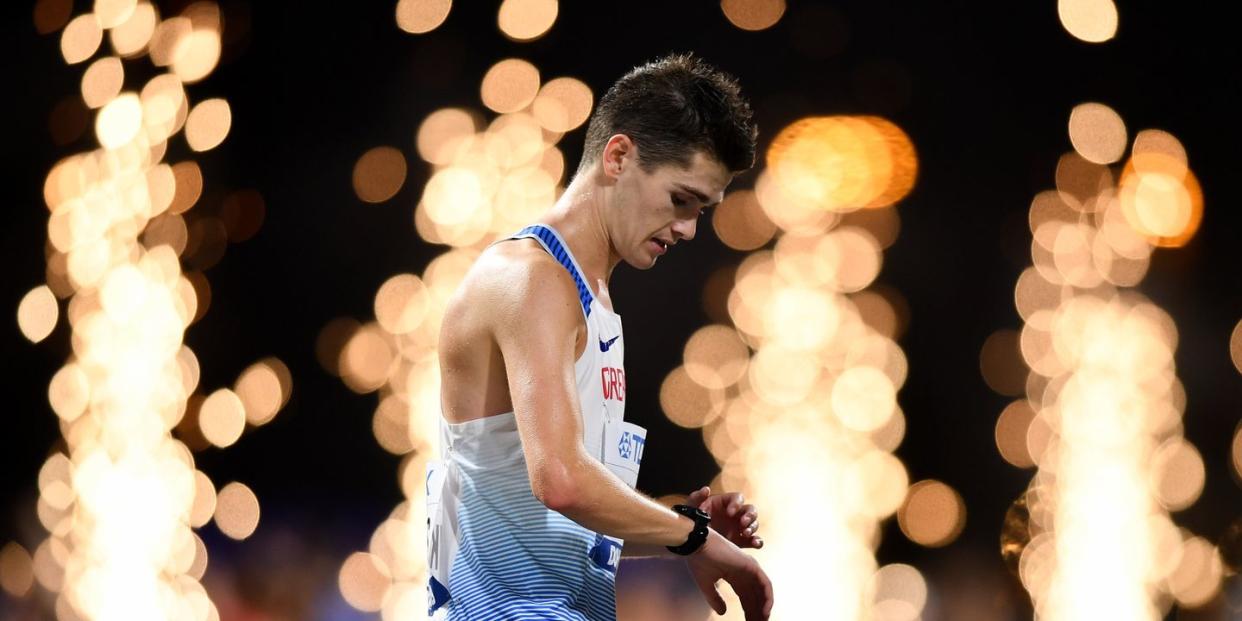Callum Hawkins on training in lockdown

When this year’s Tokyo Olympics were postponed until 2021, Callum Hawkins’ plans for the marathon were suddenly in disarray.
The 28-year-old elite had been training vigorously in his Scottish hometown of Elderslie in the months before the pandemic, under the guidance of his running coach – and father – Robert.
Having placed fourth at the World Championships in Doha last year, Hawkins had embarked on a strict regime to prepare for the humid conditions of Japan, including pounding out miles on a treadmill in an overheated garden shed. He came ninth in the marathon in the 2016 Rio Olympics and, using that experience, was intending to line up in Japan with greater focus.
But as whispers of a potential global lockdown grew louder, Hawkins had to re-evaluate his training plan.
Flying home to train
The gravity of the pandemic hit Hawkins in mid-March, when he was travelling to the United States to compete in the New York Half Marathon. His next stop from there was to be Flagstaff, Arizona, where he had planned to train at altitude for two months.
But after an uneasy two days in New York, he made the difficult decision to return home.
‘There was so much uncertainty at the time around quarantines, access to gyms, physio and medical assistance if I needed it,’ he explains.
{{ this.render( "@app/views/shared/embed-accessibility-text.twig", { embedName: "Instagram", })|raw}}
{% verbatim %}
A post shared by Callum Hawkins (@callumrhawkins) on Jun 3, 2020 at 1:10pm PDT
{% endverbatim %}
Adapting the training regime
Now several months into lockdown, Hawkins has developed a streamlined training regime.
With his trip to Flagstaff called off, he was forced to explore other ways to enhance his lung capacity. He invested in an altitude tent, which simulates the conditions of the city’s high elevation. But while this tool can recreate aspects of the running experience in Flagstaff, Hawkins knows it’s no match for the real thing.
‘It might give you the stimulus, but it certainly doesn’t replicate training on Woody Mountain Road or smashing a tempo run on Lake Mary Road,’ he admits.
The lockdown has also presented opportunities to try out new training techniques. With more leeway to experiment, now that most races are cancelled, Hawkins’ coach has freshened up the sessions with some new workouts. His treadmill, which was initially purchased to help him acclimatise to the heat of Japan, has become an asset for tackling uphill runs.

‘It would be a great time to try out something different and if they were something that could add value to the training programme,’ says Hawkins.
Despite his commitment to staying in shape, Hawkins is not overexerting himself.
While the downtime of the pandemic may seem like a golden period for intensive training, it is also a major risk factor for injury. Without physical therapy, Hawkins cannot afford to go overboard.
‘I’ve had to take a step back from that and put a schedule in place that keeps me ticking over but doesn’t push me too hard, as I’ve had no access to things like physio and massage,’ he explains.
To minimise the threat of a fracture, he has incorporated more cross-training into his regime.
‘I’ve not been able to do as much volume and had to rely on the bike more to make up the lost miles while reducing the impact stress and reducing the injury risk a bit.’
What shoes does Callum Hawkins wear?
For any runner, a major factor in preventing injury and enhancing performance is high- quality footwear.
When clocking up his daily mileage, New Balance athlete Hawkins trains primarily in New Balance Fresh Foam 1080v10. ‘I find it a great shoe for soaking up the miles and keeping the legs in good shape,’ he says.
For speedier sessions, he swears by the New Balance FuelCell TC, designed to be used in training sessions and races. ‘They are great shoe if you want something fast but something not quite as harsh as a full-on racing shoe.’
How Olympians relax
Even with such lofty goals on the horizon, Hawkins rests as hard as he trains. He advocates a total retreat from physical activity to properly recover from those tough sessions.
‘Just because you aren’t training but are still doing other things, doesn’t mean that the body is recovering,’ he says.
He allows himself to completely kick back after his 20-mile morning runs, playing video games and watching television as his muscles recover.
Racing withdrawals
Despite a racing hiatus of almost five months, Hawkins’ competitive edge is growing sharper with each day.
‘I miss everything about it, from planning which race to do, going through the entire training build-up, the pre-race nerves and the race itself.’
Hawkins credits his father for keeping him motivated when the uncertainty starts to feel overwhelming.
‘Without a goal, I sometimes think I’m just going through the motions a bit, but my coach usually snaps me out of that way of thinking.’
What’s next for Callum Hawkins?
The Tokyo Olympics may be off for this year, but the Japanese capital is still high on Hawkins’ list of preferred marathon locations.
‘World Marathon Majors are unique and I love racing in Japan, so it’s up there,’ he says.
However, if the travel restrictions continue, he is open to racing in Europe.
‘Sticking closer to home has an appeal too, so I can’t rule out European marathons at this stage either.’
Like this article? Sign up to our newsletter to get more articles like this delivered straight to your inbox.
You Might Also Like

 Yahoo News
Yahoo News 
